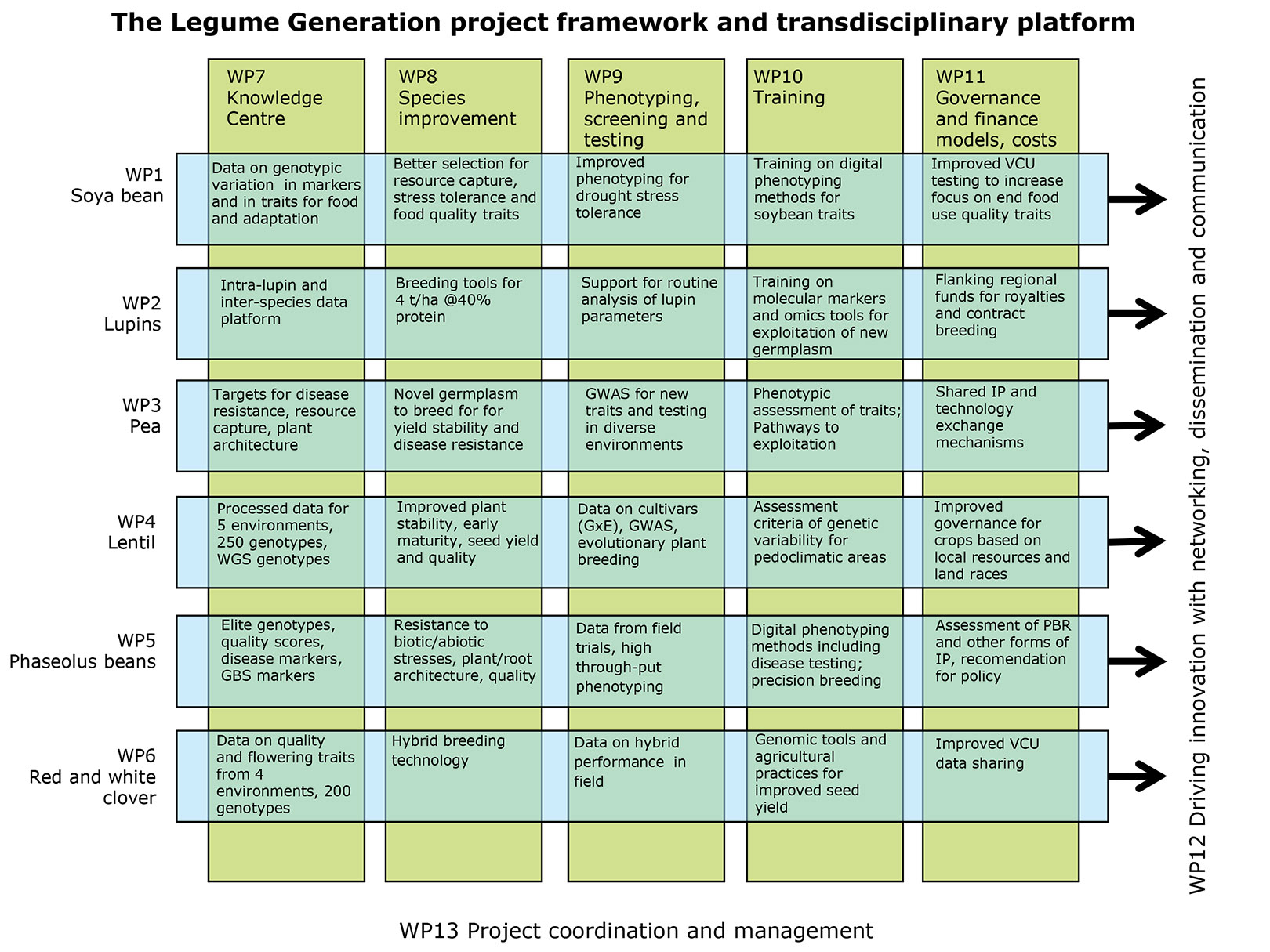Project overview
Why legumes?
It is now widely recognised that plants of the legume family are good for our health and for the planet. Lentil, lupins, pea, beans and their relatives fix their own nitrogen from the air and provide us with the protein-rich pulses that are key to a healthy and sustainable diet. Increasing their production in Europe makes our farming systems more diverse, resilient and sustainable. Their flowers are a source of pollen for insects and in addition the clovers are essential to sustainable grassland farming.
Despite all these benefits, legume crops are relatively rarely grown by European farmers, accounting for only 2-3% of the cropping area. Part of the reason for this is that investment in the breeding of legumes in Europe is constrained by the low rewards to private plant breeding for these crops.
The Legume Generation consortium aims to change this. It is ground-breaking in how it creates new structures for collaboration between legume plant breeding and public research. It puts six species-specific innovation communities at the heart of the effort to improve legume crops. Each will bring together genetic resources, expertise in data management, genetics, and testing and focus this on the breeding of their crop species, led for the benefit of breeders.
Ambition
Our goal is to boost the breeding of the major food and feed legume crops in Europe to support the EU Biodiversity and Farm to Fork strategies by making legume crops more competitive on European farms and in value chains. This will increase crop diversity and enable all the other benefits of legumes. Through six innovation communities (ICs), we will boost the breeding of soybean, lupins, pea, lentil, phaseolus beans, and clovers. Legume Generation is an innovation action. Innovation is about taking risks to improve how things are done.
Our project is structured and focused to directly support our breeding partners and associates as risk-taking innovators. A core principle is plant breeding is a species-specific entrepreneurial activity. Thus, boosting should be a species-specific effort. Consequently, each of our six species-oriented breeder-led innovation communities (ICs) links practical breeding with the supporting research-base in a transdisciplinary platform. This operational framework (see figure below) enables each of six ICs (Work package (WP) 1-6) harness the relevant science base provided by six cross-cutting science-support objectives (WP7-12). This combines innovation focus on individual species/species groups in each IC with coherence and synergies across the project. All six ICs innovate up to the point where newly-bred germplasm and tools are demonstrated on farm at technology readiness level 7 (TRL7). In this way the innovation drive within our ICs is a multi-actor force that harnesses science to improve our breeding programmes. Our work is tangible and goes beyond mere networking and exchange of resources.

